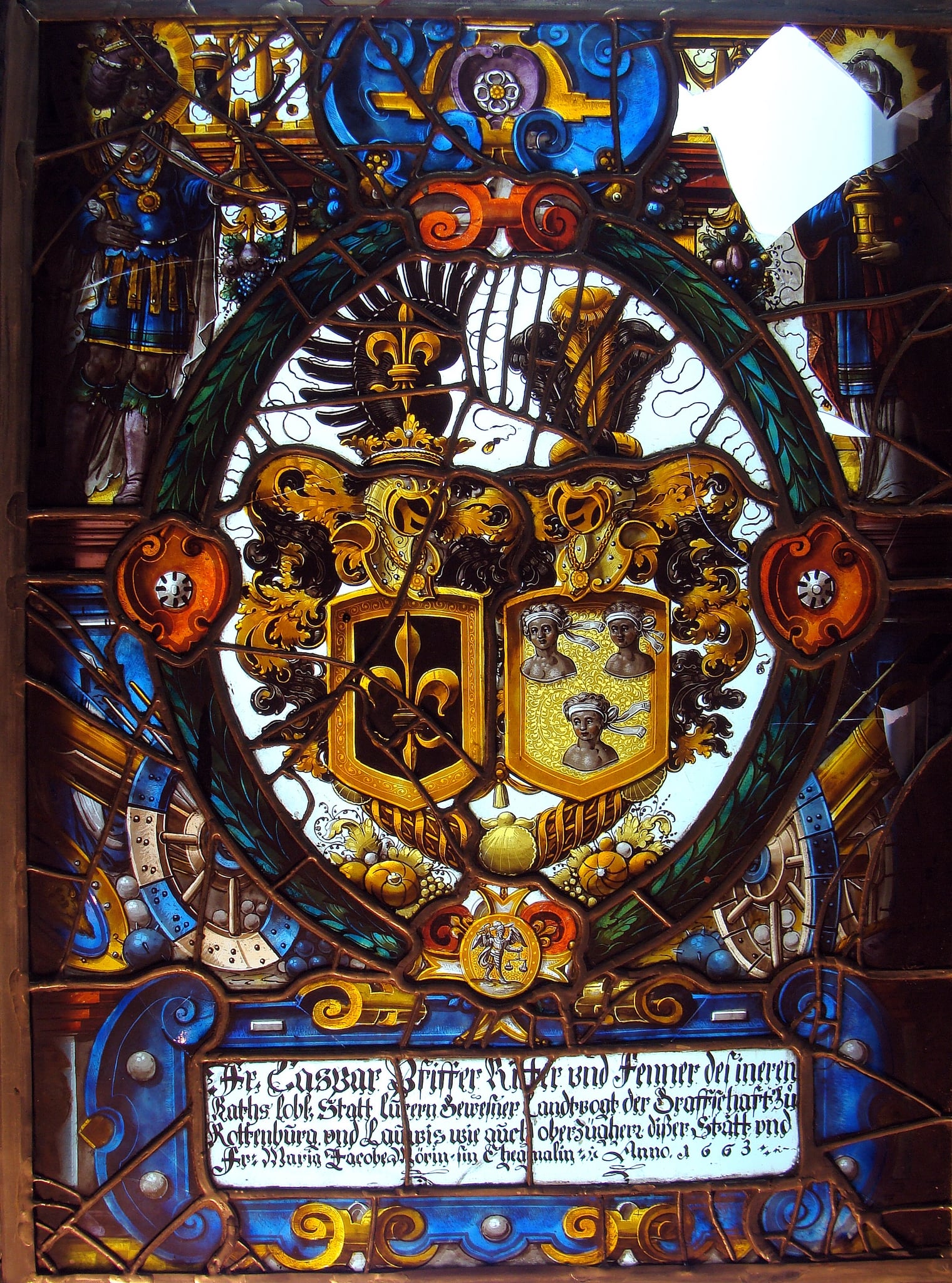Arms of husband and wife are set in an oval laurel wreath embellished by orange bosses at the sides, scroll work at the top, and the emblem of the Order of St. Michael at the bottom. The shields are surmounted by barred helms with rich mantling of the heraldic colors and silhouetted against a white ribboned ground. The oval laurel wreath is surrounded by an elaborate rectangular baroque frame. At the sides, in the upper level, are Caspar, one of the Three Magi, and Mary Magdalene, name saints of the donors. On the level below are depictions of military equipment including cannon, shields, and lances. The lower quarter of the panel is occupied by the inscription panel. A rectangular text on uncolored glass is set within a three-dimensional decorative border of blue embellished with yellow scrollwork.
11H(MARY MAGDALENE) · männliche Heilige (MARY MAGDALENE)
45A10 · Symbole, Allegorien des Krieges; Ripa: Guerra
Arms of Pfyffer, Kaspar: sable a fleur-de-lis or within a bordure of the last; crest: on a barred helm to sinister a ducal coronet and thereon a demi-vol of the first charged as the field; mantling of the colors
Arms of Mohr, Maria Jakobea: or 2 moors heads couped two and one proper within a bordure of the first; crest: on a barred helm to dexter a turban of the colors and therefrom three ostrich feathers of the second and the first; mantling of the colors
Hr. Caspar Pfiffer Ritter vnd Fenner des ineren/ Raths lobl: Statt Lūcern Gewesner Landtvogt der Graffschaft Zů/ Rottenbūrg vnd Laūwis wie aūch oberzügherr diβer Statt vnd/ Fr. Maria Jacobe Mörin sin Ehegemalin: Anno 1663
(Mr. Caspar Pfyffer Knight and Military Commander of the Inner Council of the praiseworthy city of Lucerne. Former district governor of the county of Rotenburg [canton Lucerne] and Lugano [canton Tessin] and in Lucerne, the armory manager and Mrs. Maria Jacobea Mohr, his wedded wife, in the year 1663).
none
